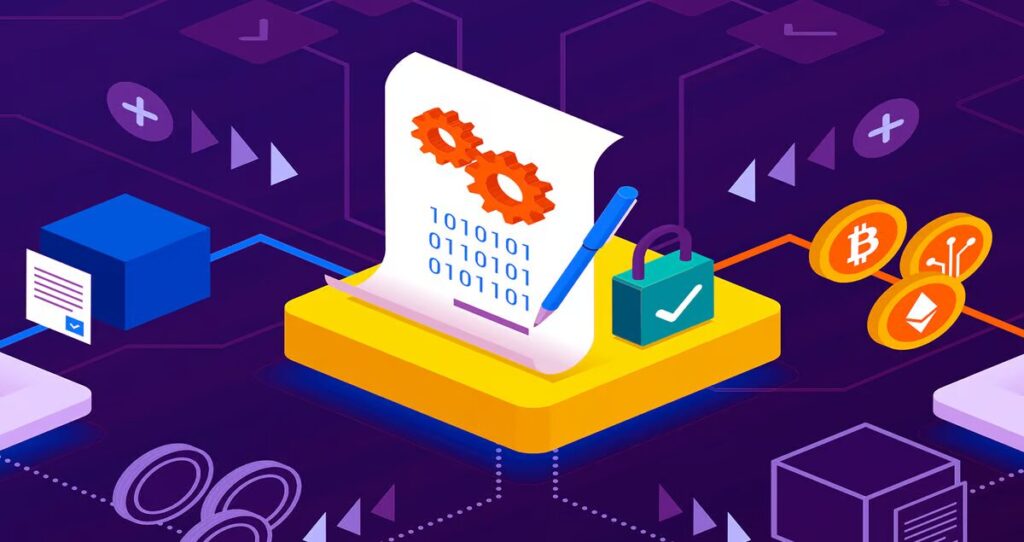In the evolving landscape of legal agreements, blockchain technology and video integration are revolutionizing the way contracts are created, managed, and executed. This convergence of cutting-edge technologies is reshaping the legal sector, offering unprecedented levels of security, transparency, and efficiency. This article delves into how blockchain and video are redefining the future of legal contracts and the profound impact they are having on modern legal solutions.
Blockchain Technology: A New Era for Contracts
Blockchain technology, renowned for its role in cryptocurrency, is proving to be a game-changer in the world of legal contracts. At the heart of blockchain’s transformative potential is its immutability. Once a contract is recorded on a blockchain, it becomes virtually impossible to alter or tamper with. This feature ensures the authenticity of contracts, as any modifications or attempts at fraud are easily detectable through the blockchain’s transparent ledger.

The benefits of blockchain extend beyond immutability. Transparency in contracts is another key advantage. Each transaction and contract modification is logged and visible to authorized parties, fostering a higher degree of trust and accountability among stakeholders. This level of transparency is especially beneficial for digital contract management, where multiple parties can access and verify contract execution in real-time, reducing the potential for disputes and misunderstandings.
Smart Contracts: Automating Execution
One of the most significant innovations within the blockchain framework is the concept of smart contracts. These are self-executing contracts with the terms of the agreement directly written into code. Smart contracts automate the execution of contract terms, eliminating the need for intermediaries and minimizing the risk of human error. By automating contract execution, smart contracts streamline the process, making it more efficient and cost-effective.
For example, in a digital contract platform, smart contracts can automatically trigger payments, enforce penalties, or execute other contractual obligations once predefined conditions are met. This automation not only speeds up the contract execution process but also enhances the reliability and accuracy of legal agreements. Additionally, smart contracts can be programmed to perform complex functions, such as multi-signature requirements or conditional transfers, further expanding their utility.
Video Contracts: Enhancing Communication and Authenticity
While blockchain addresses the technical aspects of contract security and management, video technology introduces a new dimension to the contractual process. Video contracts integrate traditional contract elements with visual and auditory components, offering a more engaging and verifiable method of agreement. This integration is particularly valuable in situations where in-person interactions are not feasible.
Personalized video contracts can capture the signatories’ expressions and verbal confirmations, adding an extra layer of authenticity to contracts. This is particularly important in the digital age, where the physical presence of parties cannot always be guaranteed. By recording the signing process, parties have a clear and indisputable record of consent, further enhancing security in legal contracts. This visual evidence can be crucial in resolving disputes or verifying agreements.
Furthermore, video technology allows for a more interactive and transparent contract negotiation process. Through video conferencing, parties can discuss contract terms in real-time, make immediate revisions, and reach consensus more effectively. This dynamic approach to contract negotiation not only speeds up the process but also ensures that all parties have a comprehensive understanding of the terms and conditions.

Innovation in Contracts: A Synergistic Approach
The integration of blockchain and video technologies represents a significant leap forward in modern legal solutions. Blockchain provides a robust foundation for contract execution on blockchain, ensuring that contracts are secure, transparent, and immutable. This technological framework enhances trust and accountability, paving the way for more reliable and efficient contract management.
At the same time, video technology adds a layer of personal interaction and verification that is often lacking in traditional contract methods. The combination of these technologies offers a synergistic approach to contract management, addressing both technical and human aspects of legal agreements. This comprehensive approach to contract management is setting new standards for innovation in contracts and driving the evolution of legal practices.
As the legal sector continues to embrace these advancements, we can expect to see a shift towards more sophisticated and user-friendly contract solutions. The adoption of blockchain and video technologies will likely lead to more streamlined processes, reduced costs, and increased transparency. These changes are not only enhancing the efficiency of contract management but also improving the overall integrity of legal agreements.
Conclusion
The future of legal contracts is being transformed by the convergence of blockchain and video technologies. Blockchain’s immutability and transparency are setting new benchmarks for digital contract management, while video contracts provide a more personal and verifiable method of agreement. Together, these technologies are driving innovation in contracts, making legal agreements more secure, efficient, and accessible.
As we move forward, the continued integration of blockchain and video technologies will redefine the landscape of legal contracts. The enhanced security in legal contracts, improved authenticity of contracts, and more interactive contract management practices will set new standards for how agreements are made and executed. Embracing these technological advancements will be crucial for legal professionals and businesses looking to stay ahead in an increasingly digital and interconnected world.



